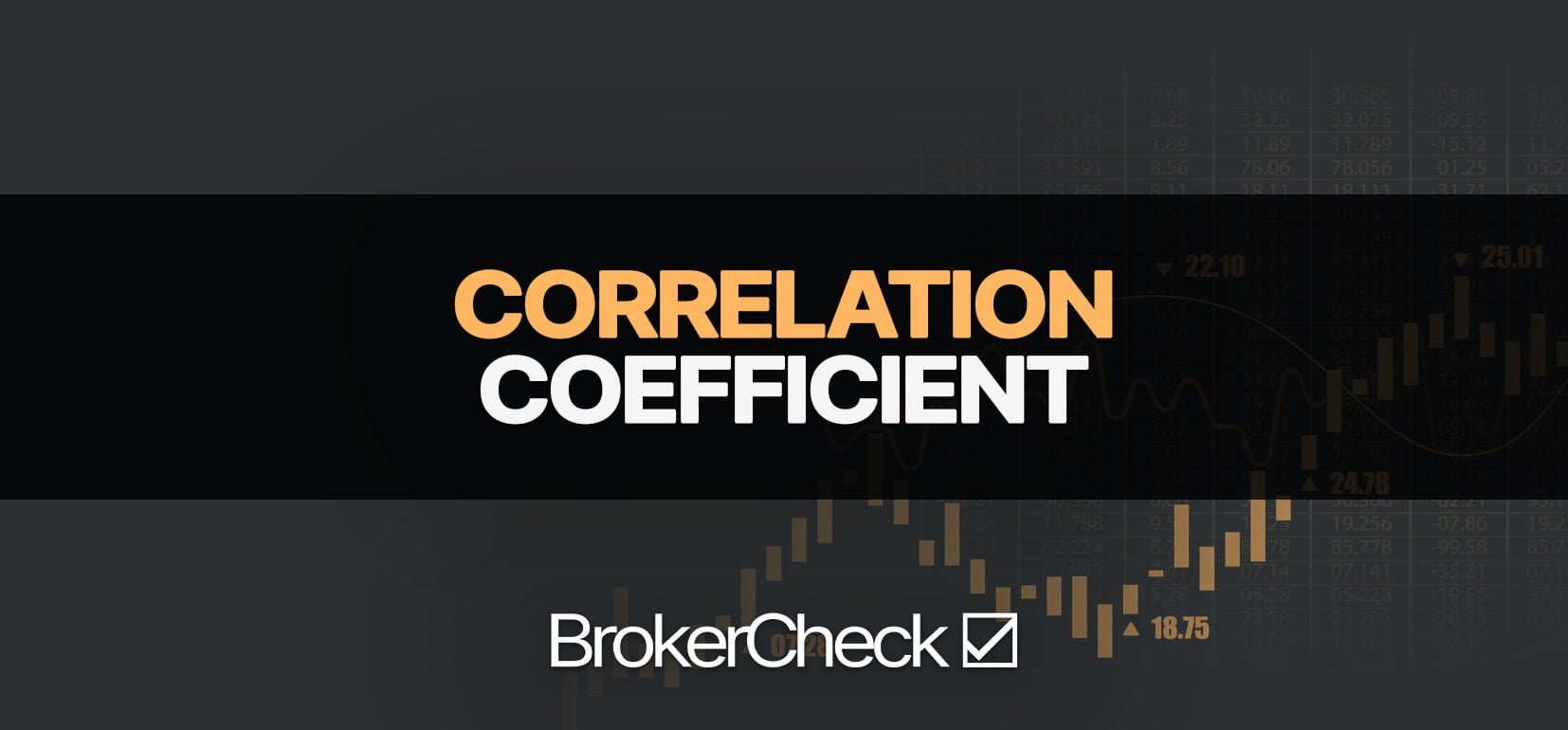1. Understanding the Correlation Coefficient
The Correlation Coefficient, a statistical measure that calculates the strength of the relationship between the relative movements of two variables, is a tool that can be invaluable to traders. When the correlation is 1, it means that the two variables move in the same direction, while a correlation of -1 implies that the two move in opposite directions. A correlation of 0, on the other hand, indicates no relationship between the variables’ movements.
Successful application of the Correlation Coefficient in trading requires a keen understanding of its nuances. For instance, it’s crucial to remember that correlation does not imply causation. Just because two variables move in tandem, it doesn’t mean one is causing the other to move. Additionally, correlations can change over time, so it’s essential to regularly reassess the relationships between the variables you’re tracking.
Interpreting the Correlation Coefficient is also critical. A high positive correlation (near 1) can indicate a strong relationship in the same direction, which can be used to predict future movements or diversify a portfolio. Conversely, a high negative correlation (near -1) suggests a strong relationship in opposite directions, which can be used to hedge against risk.
Using the Correlation Coefficient effectively in trading also involves understanding its limitations. For example, it only measures linear relationships and may not accurately represent complex or nonlinear relationships. Furthermore, outliers can significantly impact the Correlation Coefficient, potentially leading to misleading results.
Therefore, while the Correlation Coefficient is a powerful tool, it should be used in conjunction with other analysis methods to make informed trading decisions. By understanding how to interpret and apply the Correlation Coefficient, traders can enhance their strategies and potentially improve their returns.
1.1. Definition of Correlation Coefficient
In the world of trading, the Correlation Coefficient is a statistical measure that calculates the strength of the relationship between the relative movements of two variables. The values range between -1.0 and 1.0. A calculated number greater than 1.0 or less than -1.0 means that there was an error in the correlation measurement. A correlation of -1.0 shows a perfect negative correlation, while a correlation of 1.0 shows a perfect positive correlation. A correlation of 0.0 shows no linear relationship between the movement of the two variables.
To understand this concept better, consider two stocks, X and Y. If the Correlation Coefficient between them is 1, they move in the same direction. If it’s -1, they move in opposite directions. If the Correlation Coefficient is 0, the movements of stocks X and Y are not related.
While analyzing the Correlation Coefficient, it’s crucial to remember that this statistic only measures the relationship between two variables, not the cause of the movement. Therefore, even if two stocks have a high correlation, it doesn’t necessarily mean that the change in one will cause a change in the other.
In the world of trading, the Correlation Coefficient is a valuable tool that can help traders diversify their portfolios and manage risk. By understanding how different securities move in relation to each other, traders can make more informed decisions and potentially increase their chances of making profitable trades.
1.2. Importance of Correlation Coefficient in Trading
In the world of trading, the Correlation Coefficient is not just another statistical term, but a powerful tool that can significantly impact your trading strategy. It measures the relationship between two securities and how they move in relation to each other. A positive correlation signifies that both securities move in the same direction, while a negative correlation indicates they move in opposite directions.
Understanding the Correlation Coefficient can help traders manage risk and diversify their portfolio. For instance, if two stocks are highly correlated, a trader might want to avoid investing in both as they are likely to move in the same direction. On the other hand, if the stocks are negatively correlated, a trader might invest in both to hedge against potential losses.
The Correlation Coefficient is also valuable in predicting future movements of securities. For example, if a trader notices that two stocks have been strongly correlated in the past, they can use this information to anticipate future movements and make informed trading decisions. However, it’s crucial to remember that correlation does not imply causation, and other factors should also be considered.
Using the Correlation Coefficient in trading requires careful analysis and interpretation. It’s not enough to just calculate the coefficient; traders must also understand what it implies and how it can be used in their trading strategy. For example, a high positive correlation might suggest that it’s time to diversify, while a high negative correlation might indicate a good hedging opportunity.
Moreover, the Correlation Coefficient is dynamic and can change over time. Therefore, traders should regularly monitor the correlation between their securities to stay ahead of the market. By understanding and effectively using the Correlation Coefficient, traders can make more informed decisions, manage risk better, and ultimately, increase their chances of success in the market.
1.3. Interpretation of Correlation Coefficient Values
In the world of trading, understanding the Correlation Coefficient can be a game-changer. It is a statistical measure that calculates the strength of the relationship between the relative movements of two variables. The values range between -1.0 and 1.0. A calculated number greater than 1.0 or less than -1.0 indicates that there was an error in the correlation measurement.
A Correlation Coefficient of 1.0 shows a perfect positive correlation. That is, every time one variable increases, the other variable increases as well. A figure of -1.0 indicates a perfect negative correlation, meaning that whenever one variable increases, the other decreases. A correlation of zero, however, means that there is no relationship between the variables.
When you see a correlation coefficient that is close to 1, that’s a strong positive correlation. The closer the number is to -1, the stronger the negative correlation. And a number near zero just means that there’s no correlation between the variables.
But here’s where it gets interesting. Correlation coefficients are most commonly used in portfolio management. Traders often use these figures to diversify their investments. For example, if two stocks have a high correlation, a trader might choose to invest in only one of them, to avoid the risk of both stocks decreasing in value at the same time.
In the fast-paced, high-stakes world of trading, understanding the Correlation Coefficient can mean the difference between success and failure. It’s a tool that can help you make informed decisions, manage risk, and ultimately, increase your profits.
2. How to Calculate the Correlation Coefficient
When it comes to the crucial task of calculating the Correlation Coefficient, the process is straightforward yet requires precision. It begins with the collection of data pairs, for instance, the price of two different trading assets over a specific period. The next step involves determining the mean of each data set – a critical element in the calculation.
After the mean, you have to calculate the deviation of each value from the mean for both sets of data. This deviation is then squared, and the results are added together to form the Sum of Squares. The product of the deviations of both data sets is also calculated, resulting in the Sum of the Product.
The Correlation Coefficient is then calculated by dividing the Sum of the Product by the square root of the product of both Sum of Squares. The result is a value between -1 and 1, which indicates the strength and direction of the correlation.
A positive correlation coefficient indicates that the two trading assets move in the same direction, while a negative correlation indicates that they move in opposite directions. The closer the correlation coefficient is to 1 or -1, the stronger the correlation. A correlation coefficient close to 0 indicates little to no relationship between the two trading assets.
Therefore, understanding and calculating the Correlation Coefficient is an essential skill for traders, as it allows them to diversify their portfolio effectively and hedge their positions. It also provides insights into market trends and potential investment opportunities.
2.1. Gathering Relevant Data
As a trader, your primary focus should be on collecting data that directly impacts the performance of your chosen assets. This could include historical price data, financial results, economic indicators, and even geopolitical events.
Historical price data is a fundamental component of any trading strategy. It provides a clear picture of how an asset has performed over time, enabling traders to identify patterns and trends. However, it’s not just about collecting data; it’s also about understanding it. You need to know how to interpret the data, identify significant changes, and understand what these changes could mean for future performance.
Financial results and economic indicators are also crucial. They can provide valuable insights into the health of a company or economy, which can significantly impact the performance of your chosen assets. For instance, a company’s quarterly earnings report can reveal a lot about its financial health, while economic indicators like GDP growth rates or unemployment figures can give a broader view of economic conditions.
Geopolitical events can also have a significant impact on the markets. Events like elections, wars, or changes in government policy can cause significant shifts in the market, affecting the performance of your chosen assets. Therefore, keeping an eye on the news and staying informed about global events is a crucial part of gathering relevant data.
Remember, the key to using the Correlation Coefficient successfully is not just about collecting data; it’s about understanding it. The more you understand the data you’re working with, the better you’ll be able to make informed trading decisions. So take the time to gather and understand your data, and you’ll be well on your way to becoming a more effective trader.
2.2. Using Statistical Tools for Calculation
Statistical tools are an essential asset in the world of trading, and one of the most powerful among them is the Correlation Coefficient. This mathematical concept may seem daunting at first, but once mastered, it can be a game-changer in your trading strategy. The Correlation Coefficient measures the relationship between two securities, helping traders to diversify their portfolios and manage risk effectively.
By using statistical tools for calculation, traders can identify pairs of stocks that move in the same direction (positive correlation) or in opposite directions (negative correlation). For instance, if two stocks have a correlation coefficient close to 1, they are likely to move in the same direction. Conversely, a correlation coefficient close to -1 indicates that the stocks typically move in opposite directions.
However, it’s important to remember that correlation doesn’t imply causation. Just because two stocks move together doesn’t mean one’s movement is causing the other’s. It’s also crucial to understand that correlation is a dynamic measure that can change over time. Therefore, traders should regularly update their correlation calculations to ensure they’re basing their decisions on the most current data.
Statistical tools like the Correlation Coefficient can provide valuable insights, but they should be used in conjunction with other tools and techniques. Combining various methods can help traders to build a more robust and effective trading strategy. So, don’t shy away from the numbers. Embrace the power of statistics and let them guide your trading decisions.
3. Applying the Correlation Coefficient in Trading
Understanding the Correlation Coefficient is a significant step towards making informed trading decisions. This statistical measure ranges between -1 and +1, providing traders with a numerical representation of the relationship between two variables. A positive correlation indicates that the two variables move in the same direction, while a negative correlation implies they move in opposite directions.
When applied in trading, the Correlation Coefficient can be an invaluable tool. For instance, if two stocks have a high positive correlation and one begins to fall, a trader might decide to sell the other before it also decreases in value. Conversely, a negative correlation could suggest a hedging opportunity. If two stocks are negatively correlated, a trader might choose to buy one and sell the other, effectively reducing risk.
However, it’s crucial to remember that correlation is not causation. Just because two variables move together doesn’t necessarily mean one causes the other to move. Traders must consider other factors, such as fundamental analysis and market sentiment, to make well-rounded trading decisions.
Using the Correlation Coefficient in trading requires a deep understanding of the market and a keen eye for patterns. It can help traders spot potential investment opportunities and steer clear of risky ventures. But like any tool, it’s only as effective as the person wielding it. So, ensure you fully understand the Correlation Coefficient and how it can be applied in different market scenarios before incorporating it into your trading strategy.
3.1. Identifying Correlated Assets
The first step in successfully utilizing the correlation coefficient is identifying correlated assets. This means discovering pairs of assets whose price movements are related to each other. These could be two stocks from the same sector, a stock and an index, or a commodity and a related company’s stock. For example, the price of oil and the stock of an oil company often move in tandem.
Correlation is measured on a scale from -1 to 1. A correlation of 1 means the assets move in perfect sync with each other, while -1 means they move in exactly opposite directions. A correlation of 0 indicates no relationship at all. It’s important to note that correlation does not imply causation – just because two assets move together does not mean one is causing the other to move.
Identifying correlated assets can be done using a variety of tools. Some trading platforms offer correlation matrices that show the correlation between different assets. Alternatively, you can calculate the correlation yourself using historical price data and a statistical software package.
Once you’ve identified correlated assets, you can use this information to your advantage in a number of ways. For instance, if you expect one asset to rise, and it’s highly correlated with another asset, you might consider buying both. Conversely, if you expect one asset to fall, you could potentially protect yourself by selling a correlated asset.
Remember, though, that correlation is not a guarantee. It’s just one tool in a trader’s toolbox. It’s important to consider other factors, such as fundamental analysis and market sentiment, when making trading decisions.
3.2. Strategies for Trading Correlated Assets
Understanding the correlation coefficient is fundamental when it comes to trading correlated assets. This statistical measure, ranging from -1 to +1, is a powerful tool that enables traders to gauge the relationship between two financial instruments. A positive correlation indicates that the assets tend to move in the same direction, while a negative correlation suggests they generally move in opposite directions.
Pair Trading is one of the most common strategies employed when dealing with correlated assets. This involves identifying two assets that move together and taking a long position in one while simultaneously taking a short position in the other. The goal is to profit from the relative price movements of the two assets, with the expectation that any divergence in their correlation will eventually correct itself.
Portfolio Diversification is another strategy that traders use. By investing in assets that are negatively correlated, traders can potentially offset losses in one asset with gains in another. This risk management strategy is particularly useful during periods of market volatility, as it can help to stabilize portfolio returns.
Correlation Swaps are a more complex strategy that involves trading derivatives based on the correlation between two assets. In a correlation swap, one party pays a fixed rate in exchange for a payment based on the actual correlation of the two assets. This strategy is typically used by sophisticated investors who are comfortable with the risks associated with derivative trading.
Arbitrage Opportunities can also arise from correlations. If the correlation between two assets deviates from its historical norm, an arbitrageur could potentially profit by taking a position that anticipates a return to the normal correlation level.
It’s important to note that while these strategies can be effective, they also come with risks. Correlations can change over time due to a variety of factors, including changes in market conditions and macroeconomic trends. Therefore, traders should continually monitor their positions and be ready to adjust their strategies as needed.
3.3. Pitfalls and Limitations of Correlation Coefficient
While the Correlation Coefficient can be a powerful tool in your trading arsenal, it’s crucial to be aware of its potential pitfalls and limitations. One of the primary concerns is that correlation is not synonymous with causation. Just because two assets move in tandem, it doesn’t necessarily mean one is causing the other to move. This is a common misconception that can lead to misguided trading decisions.
Another limitation is that the Correlation Coefficient only measures linear relationships. If there’s a non-linear relationship between two assets, the Correlation Coefficient may not accurately represent their relationship. It’s also important to remember that the Correlation Coefficient is a statistical measure and, like all statistics, it’s subject to sampling error. This means that the Correlation Coefficient you calculate using a specific data set may not be representative of the true correlation between two assets.
Time-frame sensitivity is another pitfall to watch out for. The correlation between two assets can change drastically depending on the time frame you’re looking at. For instance, two assets might have a strong positive correlation over a year but a weak or even negative correlation over a month.
Lastly, the Correlation Coefficient is a measure of past performance, which, as any seasoned trader knows, is not necessarily indicative of future results. Just because two assets have been strongly correlated in the past doesn’t mean they’ll continue to be so in the future.
Despite these limitations, the Correlation Coefficient can still provide valuable insights when used correctly and with a clear understanding of its shortcomings. It’s not a silver bullet, but rather one tool among many in a trader’s toolkit.












